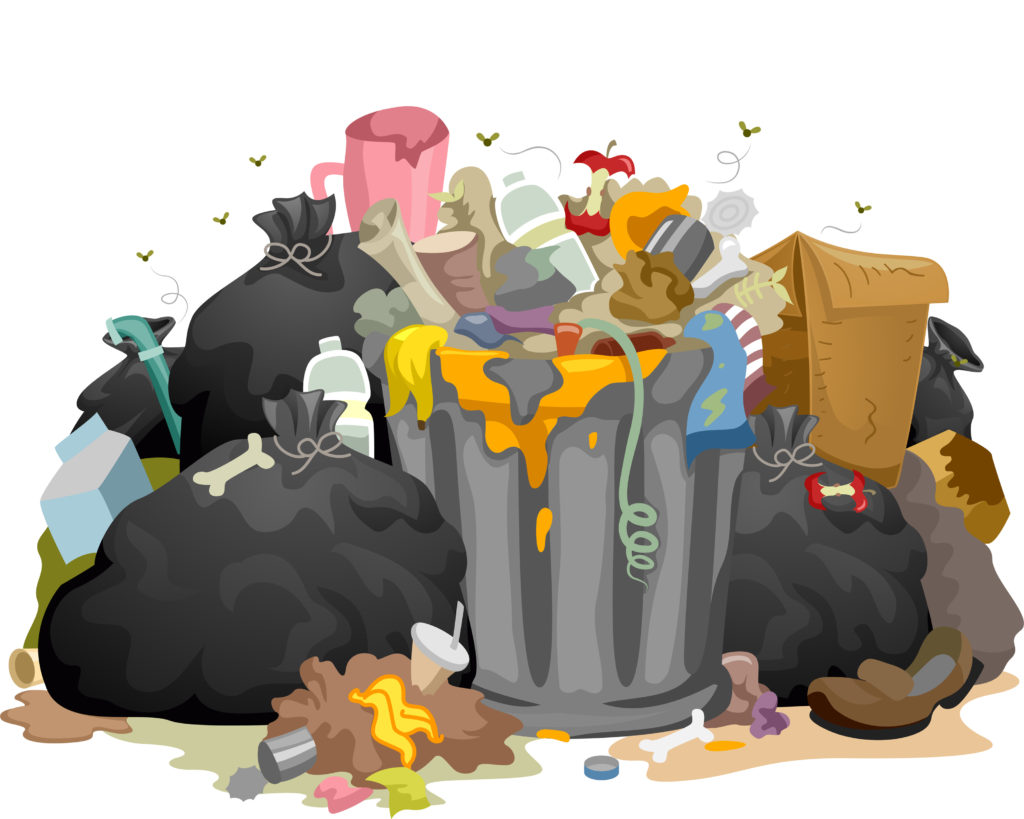
Did you ever stop to think about the history of garbage?
Humans are by their very nature careless with trash. It is not a trait of the 20th century.
As the timeline of garbage history suggests (below), there has been a problem of trash from man’s earliest time. Four basic means of dealing with trash have been used over and over in history – dumping, burning, recycling, and waste minimization.
The Mayan Indians of Central America had dumps, which exploded occasionally and burned. They also recycled. Homemakers didn’t sweep trash under their rugs. Some was trampled under foot and some was swept into corners. When it got too deep, they would bring in dirt to cover it.
Some cultures were very wasteful, considering everything disposable. Many Mayan sites demonstrated such careless consumption. Consumption and waste of resources is probably related to supply available more than any other factor. When gasoline is plentiful and cheap, automobiles get larger (nobody is thinking about future supplies). When it becomes scarce and expensive, automobiles get smaller.
Trash has played a tremendous role in history. The Bubonic Plague, cholera, and typhoid fever, to mention a few, were diseases that altered the populations of Europe and influenced monarchies. They were perpetuated by filth that harbored rats, and contaminated water supply. It was not uncommon for Europeans to throw their garbage and even human wastes out of the window. They figured that stray dogs would eat whatever they threw out.
Studies fail to substantiate the notion that Americans are more wasteful than similar civilizations of the past. Note that the nature of the waste varies greatly from one civilization to another. There is an archeological account of Native Americans in Colorado about 6500 BC who killed 200 buffalo in one day and butchered 150 of them, carrying away enough meat to feed 150 people for 23 days. They left the remains behind (some 18,380 pounds of bones, which had remained for 6500 years. Soft tissue had decomposed years ago). One hundred fifty modern day Americans would produce about 14,150 pounds in 23 days, most of which would have decomposed rapidly. Based on the weight of the bones that remained, the Native Americans in that clan produced about 5.3 pounds of waste a day as compared to 2.5 pounds a day, which is a moderate figure for middle class American consumption.
Here are some highlights from the history of garbage:
- 6,500 BC: Archeological studies shows a clan of Native Americans in what is now Colorado produced an average of 5.3 pounds of waste a day.
- 500 BC: First municipal dump in western world organized in Athens, Greece. Regulations required waste to be dumped at least a mile from the city limits.
- 1388: English Parliament bars waste dispersal in public waterways and ditches.
- 1400: Garbage piles so high outside of Paris gates that it interferes with city defense.
- 1690: Rittenhouse Mill in Philadelphia makes paper from recycled fibers (waste paper and rags).
- 1842: A report links disease to filthy environmental conditions – “age of sanitation” begins.
- 1885: The first garbage incinerator was built in USA (on Governor’s Island in NY)
- 1896: Waste reduction plants arrive in US. (for compressing organic wastes). Later closed because of noxious emissions.
- Turn of Century: By the turn of the century the garbage problem was seen as one of the greatest problems for local authorities.
- 1914: There were about 300 incinerators in the US for burning trash.
- 1920’s: Landfills were becoming a popular way of reclaiming swamp land while getting rid of trash.
- 1954: Olympia, Washington, pays for return of aluminum cans.
- 1965: The first federal solid waste management laws were enacted in the United States.
- 1968: By 1968 companies began buy back recycling of containers.
- 1970: The first Earth Day was celebrated in the United States, the Environmental Protection Agency (EPA) was created, and the Resource Recovery Act enacted.
- 1976: In 1976 Resource Conservation and Recovery Act (RCRA) was created emphasizing recycling and HW management. This was the result of two major events: the oil embargo and the discovery (or recognition) of Love Canal.
- 1979: The EPA issued criteria prohibiting open dumping.
- Today: We are still a work in progress in how we handle our garbage.